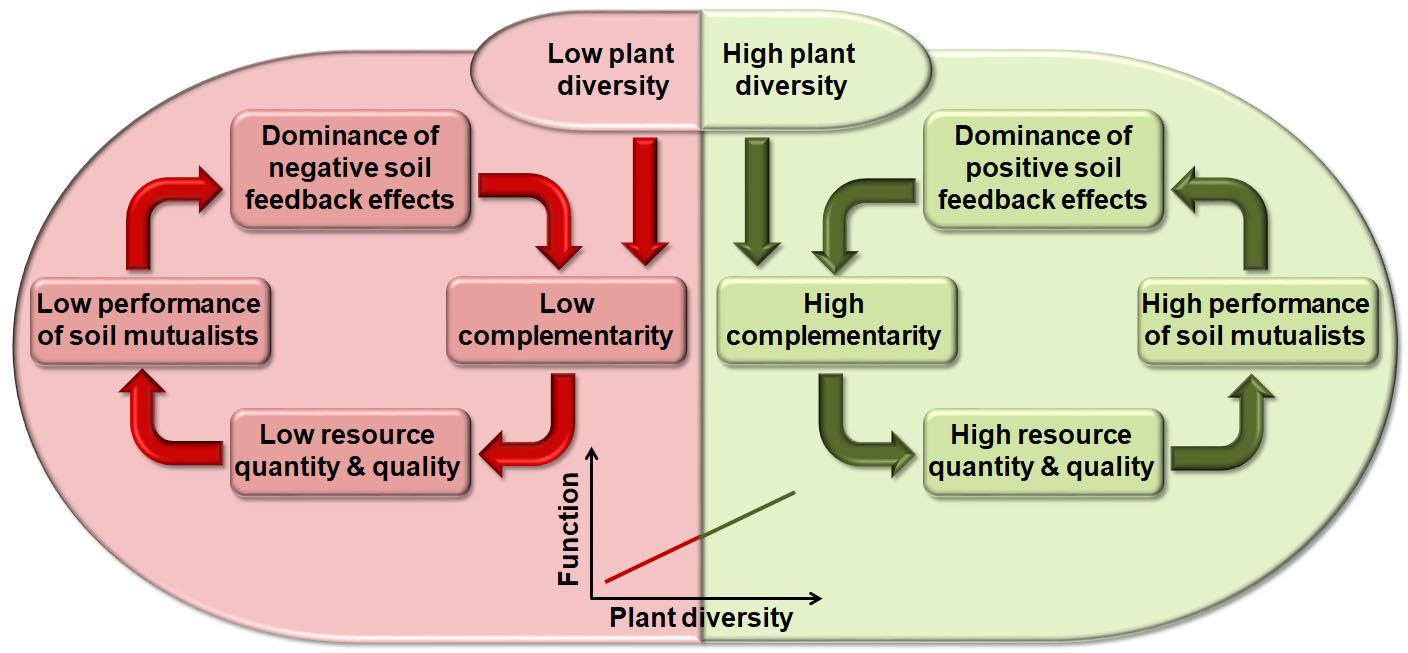
Conceptual scheme of how aboveground–belowground interactions may influence the positive relationship between plant diversity and ecosystem functioning. The left part of the scheme illustrates how lower quantity and quality of plant inputs to the soil in species-poor plant communities (being low in resource use complementarity) may induce negative soil feedback effects. The right part of the scheme shows that higher quantity and quality of plant inputs in species-rich plant communities (being high in resource use complementarity) may cause the dominance of positive soil feedback effects. Mutualists will decrease (